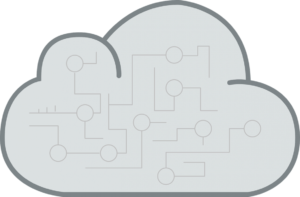The Unique Benefits of Cloud-Native SaaS for Media Companies
By Ian Hamilton, Signiant CTO
Media technology must deal with highly variable demand for time-sensitive work that involves geographically distributed locations, while operating on extremely large professional media files. These inflexible and harsh demands make the agility and cost effectiveness of cloud-native SaaS particularly relevant.
Transactions via the Internet have enabled the sharing of resources in unprecedented ways, sparking a new economic model over the past decade. The “sharing economy” includes cars, bicycles, lodging, and it also includes massive stockpiles of compute, storage and networking resources owned by cloud service providers like AWS and Microsoft Azure that are housed in data centers around the world.
Access to these compute resources has dramatically shifted the way some software companies build, deploy, update and maintain their products, creating the breakaway category of cloud-native software or SaaS (software as a service).
It has also shifted the way businesses build out their technology infrastructures, allowing businesses to forgo fixed upfront costs while at the same time eliminating time and energy consumed managing hardware. Moving up the stack, SaaS allows these same companies to eliminate upfront licensing and deployment costs and ongoing management overhead associate with traditional customer deployed software solutions.
Agility, Cost-Effectiveness and Improved UX
The need to be agile, the ability to move quickly and easily, is core to how the media industry operates today. Whether from the demands of pulling off coverage of an international sports event or taking on a feature film VFX project, technology requirements for media companies of all sizes tends to rise and fall dramatically. Coupled with the common need to onboard staff with technology access anywhere in the world and easily scale back again, having technology that can adjust to varying demands is a critical requirement.
Global Availability, Automatic Upgrades and Maintenance
With SaaS, no matter where you are located, you can expect the same performance, features and customizations. This is an obvious advantage for global media companies that have multiple national and international locations or regularly employ freelancers for project specific work.
Automatic upgrades and maintenance are standard with cloud-native SaaS. The pain of having an outdated version of software you rely on to do your job, or a version that is incompatible with your coworkers and having to wait hours to download updates or reinstall the latest release is mitigated by SaaS.
SaaS vendors take ultimate responsibility for operation of the environment, managing and maintaining it for all customers and giving them continuous access to the latest product releases while at the same time managing for zero down time. Cloud-native SaaS specifically takes advantage of the elastic nature of cloud infrastructure to maximize availability, whether its spinning up additional infrastructure to allow for a seamless upgrade or replicating data and services across multiple cloud availability zone and geographic regions.

Autoscaling
Cloud-native SaaS is autoscaling, meaning any additional infrastructure needed for periods of high use is automatically added, taking advantage of cloud infrastructure and platform services to bring new capacity online as load dictates and effectively load balance across the provisioned capacity. In addition to employing multi-tenancy (sharing the infrastructure across multiple customers) to cost effectively accommodate periods of low use, SaaS also auto-scales the infrastructure needed for periods of high use.
Together auto-scaling, load-balancing and multi-tenancy allow diverse and changing requirements to be efficiently addressed by cloud-native SaaS regardless of whether you need 3 or 300,000 users and are moving 2 GB or 200 TB.
Also, the scaling and multi-tenant capacities of SaaS allow vendors to drastically reduce overall costs with each additional customer, creating economies-of-scale savings that they can pass on to customers. With SaaS, a single cloud infrastructure can be shared by hundreds, thousands or even millions of customers. However, while infrastructure is shared, customer data is always kept private and separate.
Only Pay for What You Use
Another cost advantage of cloud-native SaaS is the way it’s billed. Often called “pay-per-use” or subscription billing, it is much easier to track and charge based on usage and easily scale up or down depending on current demand for the software.
Predicting your usage needs ahead of time is difficult, which is necessary for purchasing on-premises software. You can try to be conservative and pay for a limited capacity, but the lead time on adding new capacity can cripple your agility.
SaaS frees media companies from having to provision enough fixed infrastructure to handle peak loads. Instead, the elastic nature of the cloud allows costs to scale with usage, which is especially useful for high-demand, time-critical projects. SaaS can adjust to your needs, whether they ramp up or down slowly or quickly. It all comes down to only paying for what you actually need.

Better User Experience
Developing an improved user experience is far easier for SaaS vendors, because they are directly in touch with their customers usage of their product. SaaS vendors have access to aggregate information about user activity that allows them to more effectively target their software development bandwidth to the highest value improvements.
A major benefit of improved user experience is the lack of training needed to use many SaaS solutions. This is a particular advantage when working with partners or on-boarding staff, whether they are new or temporary.
Agility Alone Makes SaaS Worth Considering
All in all, the rather extreme agility needs of media companies alone make SaaS uniquely suited and well worth considering. While, the additional perks of cost savings and improved user experience are vendor dependent, all cloud-native SaaS should be agile, allowing you to better respond to needs and opportunities as they arise.


